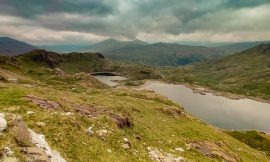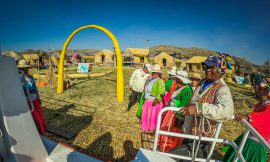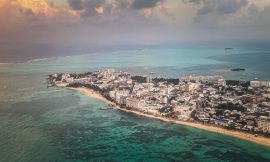Located on the foothills of the volcanic twin mountains Los Ilinizas, the waterfall and hot spring of Cunuyacu are about a 2-hour drive away from Quito. These destinations are less frequented by tourists and on an off-the-beaten-path route. To get there, you first need to get to the Ecological Reserve which can be accessed via a dirt road in San Juan de Pastocalle after coming off the Panamericana highway. There is a large tourist sign at the entrance of the dirt road so it should be easy to spot. It had rained the day before so the road was quite muddy. We went in an SUV-type vehicle and managed to get through most of the way without any issues. There was just one part where there was quite a large rock where the passengers had to get off for the car to make it up.












We made it to a car park at around 7.30 AM, and although we could proceed further, we decided to leave the cars there since the road wasn’t getting any better. We then started hiking up, and after a couple of minutes, we came across the entrance that had a large welcome sign. The road at this point was cordoned off to block vehicles access. There was also a house here and I had read up that there was someone who lives in the area that provides transportation. However, it was quite early and no one seemed to be in, so we went across the barrier and continued hiking up. From this point, the dirt road got much worse with large holes and rocks. Only a 4×4 vehicle would be able to make it up, but for a hike the road is fine. It took us about an hour to reach a viewpoint which was also the start of the trail.












First, the trail descends to the river where there is a small wooden footbridge. It was quite muddy so take care when going down the trail as some parts are very slippery. After crossing the bridge, the trail splits with one route leading to the waterfall and the other going to the hot spring. The trail has signposts along the way so you won’t get lost. We first followed signs for the waterfall and we got there in about 10 minutes. The waterfall itself isn’t too big, but the highlight is its red/orange color. The color is due to the rocks that have been tinted red by volcanic minerals. The color of the water itself is clear and it doesn’t give off a bad odor that volcanic minerals tend to produce. We were able to get close to the waterfall which made for some great pictures. To get close to the waterfall you have to cross the stream which has some slippery rocks. Water shoes or wellies would be great but not necessary. We were the only ones there and we didn’t run into any other groups at this time. We spent about 20 minutes taking pictures here before continuing to the hot spring.












We first turned back and walked along the trail to return to the footbridge. Then we followed the other route that leads up to the hot spring. Along the trail, we passed through a mystical forest of Polylepis trees. In Ecuador, this tree is nicknamed the ‘Paper Tree’ due to its appearance of the bark peeling off like layers of paper. This trail is a little longer and we reached the hot spring in about 20 minutes. Once again, we were the only group there and had the place to ourselves. The hot spring is a small natural pool where they’ve stacked some sandbags to contain more water. The water temperature itself is warm, not hot, but it’s more refreshing after the hike. You can smell the minerals here, but it is not off-putting. The highlight is the view since the pool is like a balcony on the mountainside looking over the landscape. The weather wasn’t great so we didn’t get to see much of the neighboring mountains, but it was still a great place to relax. We stayed here for about an hour before it started to rain, so we started heading back before a downpour.












It was a wonderful experience abundant in nature and great for a day trip from the capital city. The hike itself was fairly easy and only tiring due to being at an altitude of over 4000 meters. If you go later in the day, the transportation service would save you the 1-hour initial hike. It was also great to have the place to ourselves without having to deal with tourist crowds.



